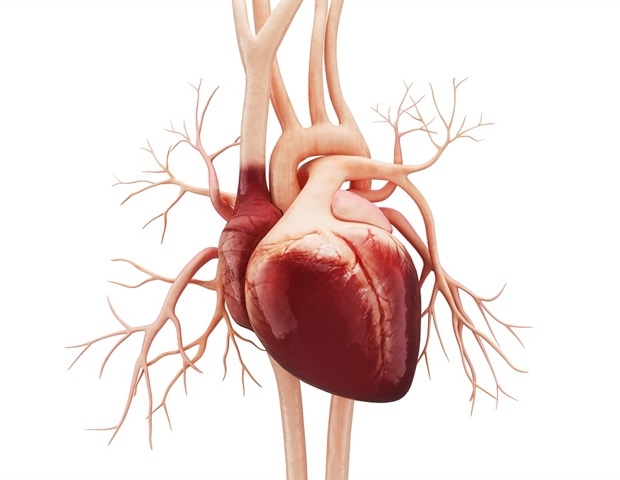Report on European Union Demographic Trends and Policy Alignment with Sustainable Development Goals
Introduction: Demographic Challenges and the SDG Framework
The European Union (EU) is experiencing an inexorable demographic shift towards an aging population. This trend is driven by two primary factors: consistently falling mortality rates, which contribute to increased life expectancy in line with Sustainable Development Goal 3 (Good Health and Well-being), and record-low total fertility rates (TFR), which fell to 1.37 in 2023. In several member states, the TFR is projected to be approximately half the replacement rate of 2.1. This rapid population aging presents significant challenges to long-term economic stability and the achievement of SDG 8 (Decent Work and Economic Growth). Public policy interventions focusing on fertility and net migration are the principal means to mitigate adverse economic consequences.
Policy Responses to Fertility Decline and Gender Equality
To address declining birth rates, many advanced economies have implemented ‘family-friendly policies’. These measures are designed to improve the socio-economic conditions for women of childrearing age and working mothers, directly supporting the objectives of SDG 5 (Gender Equality).
- Publicly Accessible Childcare: Eases the burden of care, enabling greater female labour-force participation.
- Paid Parental Leave: Provides financial security and supports a better work-life balance for parents.
- Fiscal Transfers: Offers direct financial support to families with children.
While these policies have demonstrated a positive impact on both fertility levels and female labour-force participation, they have proven insufficient to reverse the EU’s overall fertility decline. A return to replacement-level fertility through these measures alone is considered unlikely.
The Role of Immigration in Achieving Sustainable Development
Given the limitations of fertility-based policies, immigration emerges as the most effective long-term public policy tool for managing the EU’s demographic trajectory. For over a decade, net migration has been the sole factor preventing a rapid decline in the EU’s total population. A well-managed immigration policy is therefore critical for:
- Sustaining the workforce and supporting future potential growth rates, which is essential for SDG 8 (Decent Work and Economic Growth).
- Ensuring fiscal sustainability and the continued funding of public services within communities, aligning with SDG 11 (Sustainable Cities and Communities).
- Developing effective and accountable institutions to manage migration flows, a key target of SDG 16 (Peace, Justice and Strong Institutions).
Analysis of Immigration Channels and Fiscal Impact
Immigration to the EU occurs through four primary channels, each with distinct objectives and impacts on sustainable development. The economic and fiscal implications of these channels vary significantly, necessitating a strategic policy approach.
- Work-Based Migration: Directly contributes to economic output and fiscal health, advancing SDG 8.
- Education and Study: Attracts talent and fosters innovation, supporting SDG 4 (Quality Education) and long-term economic capacity.
- Family-Based Migration: Promotes social cohesion and upholds fundamental rights, contributing to the social fabric of SDG 11.
- Refugee and Protected Status: Fulfills international obligations and promotes the goals of SDG 10 (Reduced Inequalities) and SDG 16.
Recent economic analyses from Denmark and the Netherlands indicate a clear divergence in the fiscal contributions of these channels. The findings highlight that to secure long-term economic gains and ensure fiscal sustainability, a re-prioritization is required.
- Net Positive Fiscal Contribution: Associated primarily with employment-based and, to a lesser extent, education-based migration.
- Net Negative Fiscal Contribution: Generally resulting from asylum-based and family-based migration.
Policy Recommendations for Sustainable Migration Management
Currently, only about a quarter of all EU residence permits are issued for employment and education. This composition may not be economically sustainable. To align immigration policy with long-term sustainability goals, particularly SDG 8, a strategic shift towards prioritizing economic channels is recommended. The case of Denmark demonstrates the political and practical feasibility of such a transition.
- Denmark successfully increased overall migration levels while shifting the composition towards economic streams.
- By 2018, asylum and family reunification accounted for only 5% of new residence permits.
- By 2024, education and employment-based permits collectively accounted for approximately 70% of the total.
Adopting a similar model across the EU would help secure the necessary positive effects on future growth and fiscal sustainability. This strategic rebalancing is essential for managing demographic change in a manner that supports the comprehensive achievement of the Sustainable Development Goals.
1. Which SDGs are addressed or connected to the issues highlighted in the article?
SDG 3: Good Health and Well-being
- The article begins by discussing demographic trends in the European Union, specifically the “unstoppable” ageing of the population. This is directly linked to health outcomes, as it mentions that “European mortality rates have fallen steadily for the last century.” It also focuses heavily on the “total fertility rate (TFR),” a key demographic and health-related metric. These discussions on mortality, fertility, and population age structure connect directly to the broader goals of ensuring healthy lives and promoting well-being for all at all ages.
SDG 5: Gender Equality
- The article addresses gender equality when discussing potential policy solutions to low fertility rates. It highlights “family-friendly policies” that “improve the social and economic situation of working mothers and women of childrearing age.” It explicitly mentions measures like “publicly accessible childcare and paid parental leave” and their impact on “prime-age female labour-force participation.” Furthermore, it points to the importance of “societal norms that dictate relatively equal sharing between men and women of household work and, especially, child-rearing responsibilities,” which is a core tenet of SDG 5.
SDG 8: Decent Work and Economic Growth
- The core of the article revolves around the economic challenges posed by an ageing population, such as “fiscal pressures” and slowing “future growth rates.” It proposes immigration policy as a tool to “mitigate the worst economic effects” and secure “improved long-term economic prospects.” The analysis strongly advocates for prioritizing “employment-based migration” to ensure a “net-positive contribution to public finances” and boost “future potential growth rates.” This focus on employment, economic sustainability, and growth aligns directly with SDG 8.
SDG 10: Reduced Inequalities
- The article’s detailed discussion on immigration policy is highly relevant to SDG 10. It examines the different channels of migration—”family-based, education and study, work, and refugee”—and calls for a shift in policy to manage these flows effectively. The argument for a well-managed immigration system that balances economic needs with other objectives, such as providing a “safe haven to those fleeing war and persecution,” directly relates to the goal of facilitating orderly and responsible migration.
2. What specific targets under those SDGs can be identified based on the article’s content?
SDG 3: Good Health and Well-being
- Target 3.7: By 2030, ensure universal access to sexual and reproductive health-care services, including for family planning, information and education, and the integration of reproductive health into national strategies and programmes.
- The article’s extensive discussion of the EU’s declining “total fertility rate (TFR)” and the limited success of “family-friendly policies” in boosting it relates to this target. Fertility rates are a key aspect of reproductive health, and the policies discussed are national strategies aimed at influencing these outcomes.
SDG 5: Gender Equality
- Target 5.4: Recognize and value unpaid care and domestic work through the provision of public services, infrastructure and social protection policies and the promotion of shared responsibility within the household and the family as nationally appropriate.
- This target is directly addressed when the article mentions policies like “publicly accessible childcare and paid parental leave.” It also explicitly refers to the positive effect of “societal norms that dictate relatively equal sharing between men and women of household work and, especially, child-rearing responsibilities.”
- Target 5.5: Ensure women’s full and effective participation and equal opportunities for leadership at all levels of decision-making in political, economic and public life.
- The article connects family-friendly policies to their ability to boost “prime-age female labour-force participation,” which is a crucial component of women’s full participation in economic life.
SDG 8: Decent Work and Economic Growth
- Target 8.8: Protect labour rights and promote safe and secure working environments for all workers, including migrant workers, in particular women migrants, and those in precarious employment.
- While not discussing rights in detail, the article’s strong emphasis on shifting towards an “employment-based migration” system implies a focus on integrating migrants into the formal labor market, which is a prerequisite for protecting their labor rights and ensuring decent work. The goal is to make migration a positive contributor to the economy through work.
SDG 10: Reduced Inequalities
- Target 10.7: Facilitate orderly, safe, regular and responsible migration and mobility of people, including through the implementation of planned and well-managed migration policies.
- This is the most central target in the article. The entire text is an analysis of how to create a “well-managed migration policy” for the EU. It evaluates different “channels of immigration” (work, family, asylum, education) and argues for a strategic shift to prioritize economic considerations to ensure the system is sustainable and effective, as demonstrated by the Danish model.
3. Are there any indicators mentioned or implied in the article that can be used to measure progress towards the identified targets?
Indicators for SDG 3 (Target 3.7)
- Total Fertility Rate (TFR): The article explicitly uses this indicator, stating the EU’s TFR “hit a record low of just 1.37 in 2023” and noting that in countries like Malta and Spain, it is “around just half of the replacement rate of 2.1.” This is a direct measure related to family planning and reproductive health outcomes.
Indicators for SDG 5 (Targets 5.4 & 5.5)
- Female labour-force participation rate: The article mentions that policies like childcare and parental leave can boost “prime-age female labour-force participation.” This rate is a key indicator for measuring women’s economic participation.
- Existence of family-friendly policies: The article identifies “publicly accessible childcare and paid parental leave” as specific policy measures. The adoption and generosity of such policies can be used as an indicator of progress towards recognizing and supporting care work.
Indicators for SDG 8 (Target 8.8)
- Net fiscal contribution of immigrants: The article refers to studies from Denmark and the Netherlands that analyze the “net-positive contribution to public finances from employment-based” migration versus the “net-negative contributions” from other channels. This fiscal impact serves as a key economic indicator.
- Proportion of migrants in employment-based channels: The article states that “Only about a quarter of all EU residence permits currently relate to employment and education-based migration.” This percentage is a direct indicator of the focus of a country’s migration policy.
Indicators for SDG 10 (Target 10.7)
- Number of residence permits issued by migration channel: The article provides detailed data for Denmark as an example of a well-managed policy. It states that by 2018, “asylum and family reunifications only accounted for about 5% of the total number of new residence permits,” while education and employment each accounted for about 35%. This breakdown is a clear indicator of the structure and priorities of a country’s migration policy.
- Total number of migrants or residence permits: The article mentions the overall migration levels, noting that in Denmark, “New residence permits issued… rose from roughly 20,000 per year in the late 1990s to about 60,000 annually by 2014.” This measures the scale of migration being managed.
4. Table of SDGs, Targets, and Indicators
| SDGs | Targets | Indicators |
|---|---|---|
| SDG 3: Good Health and Well-being | 3.7: Ensure universal access to sexual and reproductive health-care services. |
|
| SDG 5: Gender Equality |
5.4: Recognize and value unpaid care and domestic work.
5.5: Ensure women’s full and effective participation in economic life. |
|
| SDG 8: Decent Work and Economic Growth | 8.8: Protect labour rights and promote safe and secure working environments for all workers, including migrant workers. |
|
| SDG 10: Reduced Inequalities | 10.7: Facilitate orderly, safe, regular and responsible migration and mobility of people. |
|
Source: bruegel.org







